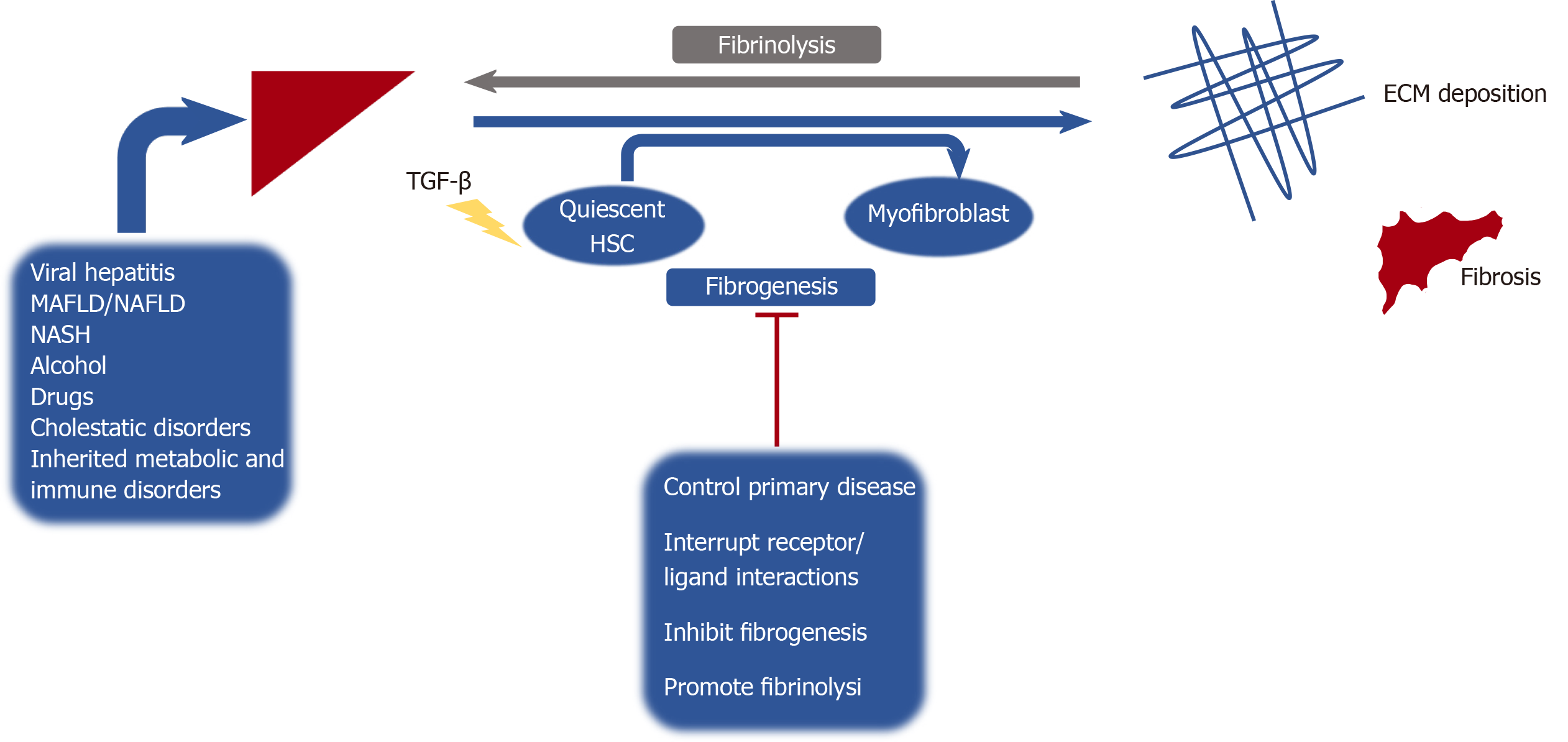Copyright
©The Author(s) 2020.
World J Gastroenterol. Nov 7, 2020; 26(41): 6304-6321
Published online Nov 7, 2020. doi: 10.3748/wjg.v26.i41.6304
Published online Nov 7, 2020. doi: 10.3748/wjg.v26.i41.6304
Figure 1 Hepatic fibrosis and subsequent cirrhosis caused by a variety of different etiologies, is a balance between fibrosis formation (fibrogenesis) and fibrinolysis.
Anti-fibrotic drugs target a variety of mechanisms involved in this balance between formation of extracellular matrix and subsequent fibrosis and its breakdown (fibrinolysis). Transforming growth factor-β is the most influential cytokine in the induction of fibrogenesis, as it plays a pivotal role in hepatic stellate cells activation and myofibroblast formation. NAFLD: Nonalcoholic fatty liver disease; NASH: Nonalcoholic steatohepatitis; MAFLD: Metabolic associated fatty liver disease; HSC: Hepatic stellate cells; ECM: Extracellular matrix.
- Citation: Damiris K, Tafesh ZH, Pyrsopoulos N. Efficacy and safety of anti-hepatic fibrosis drugs. World J Gastroenterol 2020; 26(41): 6304-6321
- URL: https://www.wjgnet.com/1007-9327/full/v26/i41/6304.htm
- DOI: https://dx.doi.org/10.3748/wjg.v26.i41.6304









